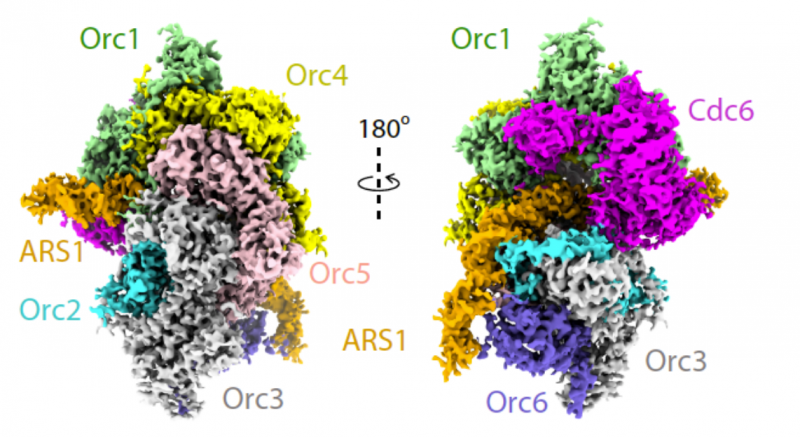By Shannon Quinney
June 24, 2021
Time to read: 2 minutes
By Shannon Quinney
DNA replication is the process by which a molecule of DNA is duplicated. It plays a crucial role in the growth and renewal of cells. The process of DNA replication is highly regulated, as any errors could lead to harmful mutations.
The initiation of replication is a multi-step process which begins with a six-subunit DNA binding complex called the Origin Recognition Complex (ORC). ORC binds to sites in chromosomes to specify the location of origins of DNA replication.
In the budding yeast S. cerevisiae, ORC binds to specific DNA sequences throughout the cell cycle but only becomes active when it binds to Cdc6, a replication initiator. Until now, it has been unclear at the molecular level how Cdc6 activates ORC.
Research published in Nature Communications, involving the DNA Replication group at the MRC London Institute of Medical Sciences, has uncovered the molecular mechanism of this critical biochemical step in the licensing of eukaryotic replication origins.
Here, the team report a high-resolution structure of ORC-Cdc6 in complex with origin DNA, using cryo-electron microscopy (cryo-EM). This type of microscopy allows scientists to explore the structure, function and interaction of proteins, nucleic acids and other biomolecules.

The structure presents new details of how Cdc6 is involved in recruiting the Mcm2-7 hexamer and how its regulated ATPase activity is configured just at the right time during DNA replication. This structure fills a major gap in our understanding of replication origin licensing.
Christian Speck, head of the DNA replication group has been working on this question since his post-doc, more than 20 years ago.
“Structural information is key in understanding how biological processes work. The Institute has recently upgraded its capability to do electron microscopy structures in house. Future projects will benefit from this.”
Cdc6 is a key initiation factor, and mutations that impair the Cdc6 ATPase activity are lethal. The findings could have a clinical impact when it comes to pathogenic fungi. By learning more about the structures involved in DNA replication we can start to think about how to inhibit this process and stop pathogens from replicating.
‘The structure of ORC–Cdc6 on an origin DNA reveals the mechanism of ORC activation by the replication initiator Cdc6’ was published in Nature Communications on 23 June 2021. Read the full article here.